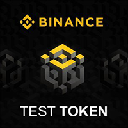-
 Bitcoin
Bitcoin $96,387.8679
2.14% -
 Ethereum
Ethereum $1,827.5248
1.41% -
 Tether USDt
Tether USDt $0.9999
0.01% -
 XRP
XRP $2.1378
1.04% -
 BNB
BNB $604.2110
0.89% -
 Solana
Solana $145.7139
0.83% -
 USDC
USDC $1.0000
0.00% -
 Dogecoin
Dogecoin $0.1717
1.36% -
 Cardano
Cardano $0.6756
2.42% -
 TRON
TRON $0.2442
-1.03% -
 Sui
Sui $3.3757
0.81% -
 Chainlink
Chainlink $13.8755
2.39% -
 Avalanche
Avalanche $19.7867
0.19% -
 UNUS SED LEO
UNUS SED LEO $8.7336
0.83% -
 Stellar
Stellar $0.2604
0.80% -
 Shiba Inu
Shiba Inu $0.0...01273
0.44% -
 Toncoin
Toncoin $2.9957
-0.36% -
 Hedera
Hedera $0.1759
1.18% -
 Bitcoin Cash
Bitcoin Cash $371.4131
3.31% -
 Litecoin
Litecoin $91.2861
10.54% -
 Hyperliquid
Hyperliquid $20.7053
2.21% -
 Polkadot
Polkadot $3.9445
1.29% -
 Dai
Dai $1.0001
0.00% -
 Monero
Monero $287.7518
2.87% -
 Bitget Token
Bitget Token $4.3110
0.38% -
 Ethena USDe
Ethena USDe $1.0004
0.02% -
 Pi
Pi $0.5802
-1.06% -
 Pepe
Pepe $0.0...07980
0.81% -
 Bittensor
Bittensor $370.2201
-0.85% -
 Uniswap
Uniswap $4.9002
-0.39%
How high will the THORChain(RUNE) currency go?
THORChain's (RUNE) future price remains uncertain, but its non-custodial trading and native token rewards could drive long-term growth if the project maintains its competitive advantages, adapts to regulatory changes, and fosters network adoption.
Dec 07, 2024 at 03:56 pm
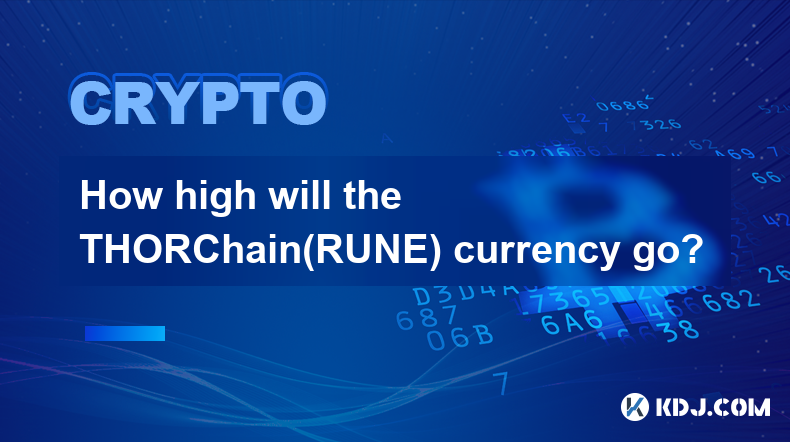
How High Will the THORChain (RUNE) Currency Go?
THORChain (RUNE) is a decentralized liquidity network that enables users to trade cryptocurrencies across different blockchains in a non-custodial manner. Founded in 2018, THORChain aims to provide a secure and decentralized alternative to centralized exchanges, while also offering native token rewards for providing liquidity and securing the network.
Predicting the future price performance of any cryptocurrency is inherently challenging, and RUNE is no exception. However, by examining the project's fundamentals, market dynamics, and historical performance, we can attempt to gauge its potential growth trajectory.
Factors Influencing THORChain's Price Growth
1. Cross-Chain Interoperability: THORChain's unique cross-chain capabilities set it apart from many other decentralized exchanges. It allows users to trade cryptocurrencies between different blockchains without the need for intermediary platforms or wrapping assets. This feature could be a significant driver of demand for RUNE, as the cross-chain market is rapidly growing.
2. Non-Custodial Trading: THORChain employs a non-custodial trading model, meaning users maintain control over their private keys and crypto assets at all times. This aspect enhances the security and trustless nature of trading on THORChain, which could further fuel the adoption of RUNE.
3. Token Economics: RUNE, the native token of THORChain, plays a crucial role in the network's functionality and security. RUNE holders can earn rewards for providing liquidity and participate in the network's governance through the THORChain decentralized autonomous organization (DAO). This tokenomic model could potentially increase the demand for RUNE, driven by the incentives it offers to users.
Past Performance and Market Trends
4. Historical Price Action: RUNE has exhibited significant price volatility since its inception. In 2021, the token surged to a record high of $21.48, primarily driven by the hype surrounding decentralized finance (DeFi) and the broader cryptocurrency market rally. However, RUNE's price has since experienced sharp declines, particularly in 2022, due to factors such as market corrections and regulatory concerns surrounding DeFi projects.
5. Market Sentiment: Market sentiment plays a vital role in determining the short-term price movements of any cryptocurrency. In the case of RUNE, positive sentiment surrounding the project's cross-chain capabilities, non-custodial trading model, and token economics could contribute to increased demand and higher prices. However, negative market conditions or adverse news about DeFi or the cryptocurrency industry as a whole could put downward pressure on RUNE's price.
Future Growth Potential
6. Cross-Chain Bridge Competition: THORChain faces competition from other cross-chain bridges, such as Cosmos IBC, Anyswap, and Avalanche Bridge. As the cross-chain ecosystem evolves, THORChain must maintain its competitive advantages by focusing on security, efficiency, and ease of use to strengthen its market position.
7. Regulatory Landscape: The regulatory landscape for DeFi projects remains uncertain, and evolving regulations could impact the growth and adoption of THORChain. Favorable regulations could boost user confidence and increase the demand for RUNE, while unfavorable regulations could hinder the project's progress.
8. Team and Development: The strength and dedication of the THORChain team play a critical role in the project's long-term success. The team's ability to navigate industry challenges, innovate, and deliver on its roadmap will be key in driving the future growth of RUNE.
9. Network Adoption: The level of adoption of THORChain and its services is central to the token's long-term value. If THORChain succeeds in attracting users, liquidity providers, and developers to its platform, it could lead to increased demand for RUNE and contribute to its price appreciation. However, if adoption falls short of expectations, it could hinder the token's price growth potential.
10. Economic Conditions: Macroeconomic factors, such as interest rates, inflation, and economic growth, can also influence the price of RUNE. A favorable economic climate, marked by low inflation and interest rates, could support the growth of the cryptocurrency market and boost demand for assets like RUNE. Conversely, an adverse economic environment could dampen investor sentiment and suppress the token's price.
Disclaimer:info@kdj.com
The information provided is not trading advice. kdj.com does not assume any responsibility for any investments made based on the information provided in this article. Cryptocurrencies are highly volatile and it is highly recommended that you invest with caution after thorough research!
If you believe that the content used on this website infringes your copyright, please contact us immediately (info@kdj.com) and we will delete it promptly.
- US Overtakes China as Top Bitcoin Mining Hub, Prompting Questions About How Beijing Will Respond
- 2025-05-07 14:05:13
- Indonesia suspends Worldcoin, the eyeball-scanning cryptocurrency project co-founded by OpenAI CEO Sam Altman
- 2025-05-07 14:05:13
- Bitcoin (BTC) Surges to New All-Time High of $97,388 Ahead of Fed FOMC Meeting
- 2025-05-07 14:00:12
- The crypto market intensifies due to growing opportunities as Dogecoin (DOGE) and Mutuum Finance (MUTM) attract investing interest.
- 2025-05-07 14:00:12
- The heads on coins are usually reserved for kings and queens, but how about Australian comedy royalty?
- 2025-05-07 13:55:13
- Elizabeth Warren and Five Other Democratic Senators Sent a Joint Letter to Janet Yellen, Harshly Criticizing the Trump Administration's Plan to Include Crypto Assets in the National Strategic Reserves
- 2025-05-07 13:55:13
Related knowledge

How to trade KAIA contracts? What is the difference between delivery and perpetual contracts?
May 07,2025 at 01:50pm
Trading KAIA contracts can be an exciting way to engage with the cryptocurrency market, offering opportunities for both short-term gains and long-term strategies. Before delving into the specifics of trading KAIA contracts, it's important to understand the two main types of contracts available: delivery and perpetual contracts. Each type has its unique ...

How to trade KAIA with leverage? What should I pay attention to in risk control?
May 07,2025 at 02:07pm
Introduction to Trading KAIA with LeverageTrading KAIA with leverage can significantly amplify your potential returns, but it also increases the risk of substantial losses. KAIA, a cryptocurrency, can be traded on various platforms that offer leverage. Leverage allows traders to borrow capital to increase their trading position beyond what would be poss...
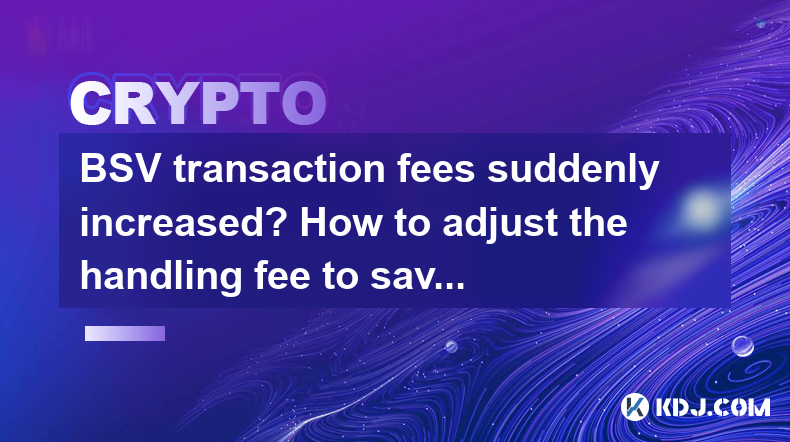
BSV transaction fees suddenly increased? How to adjust the handling fee to save costs?
May 02,2025 at 06:42am
Understanding BSV Transaction FeesBSV (Bitcoin SV) aims to fulfill the original vision of Bitcoin as a peer-to-peer electronic cash system. One of the key elements in this system is the transaction fee, which compensates miners for including transactions in the blockchain. Recently, users have noticed a sudden increase in BSV transaction fees, which can...
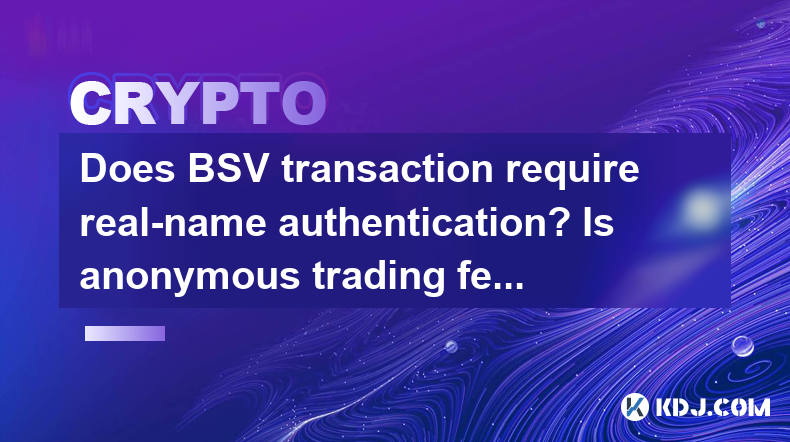
Does BSV transaction require real-name authentication? Is anonymous trading feasible?
May 03,2025 at 03:14pm
The question of whether BSV (Bitcoin SV) transactions require real-name authentication and whether anonymous trading is feasible is a complex one, deeply intertwined with the broader dynamics of cryptocurrency regulations and blockchain technology. Let's delve into these aspects to provide a comprehensive understanding. Understanding BSV and Its Transac...
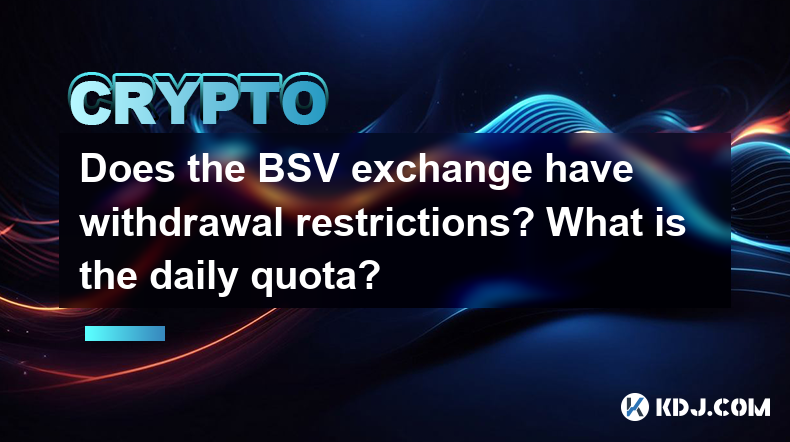
Does the BSV exchange have withdrawal restrictions? What is the daily quota?
May 07,2025 at 08:01am
The BSV (Bitcoin SV) exchange, like many other cryptocurrency platforms, implements various withdrawal restrictions and daily quotas to ensure the security and stability of the platform. Understanding these restrictions is crucial for users who frequently engage in transactions involving BSV. This article delves into the specifics of withdrawal restrict...
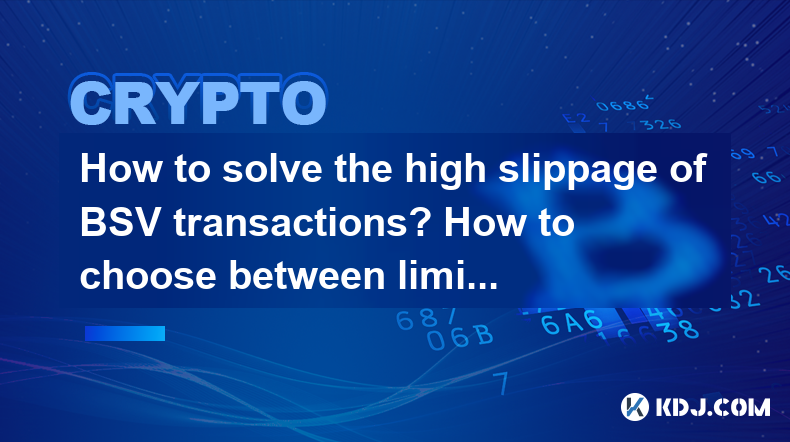
How to solve the high slippage of BSV transactions? How to choose between limit and market orders?
May 02,2025 at 09:01pm
High slippage can be a significant concern for traders dealing with Bitcoin SV (BSV) transactions. Slippage refers to the difference between the expected price of a trade and the price at which the trade is actually executed. This can occur in fast-moving markets or when there is low liquidity. To address this issue, understanding the mechanics of slipp...

How to trade KAIA contracts? What is the difference between delivery and perpetual contracts?
May 07,2025 at 01:50pm
Trading KAIA contracts can be an exciting way to engage with the cryptocurrency market, offering opportunities for both short-term gains and long-term strategies. Before delving into the specifics of trading KAIA contracts, it's important to understand the two main types of contracts available: delivery and perpetual contracts. Each type has its unique ...

How to trade KAIA with leverage? What should I pay attention to in risk control?
May 07,2025 at 02:07pm
Introduction to Trading KAIA with LeverageTrading KAIA with leverage can significantly amplify your potential returns, but it also increases the risk of substantial losses. KAIA, a cryptocurrency, can be traded on various platforms that offer leverage. Leverage allows traders to borrow capital to increase their trading position beyond what would be poss...

BSV transaction fees suddenly increased? How to adjust the handling fee to save costs?
May 02,2025 at 06:42am
Understanding BSV Transaction FeesBSV (Bitcoin SV) aims to fulfill the original vision of Bitcoin as a peer-to-peer electronic cash system. One of the key elements in this system is the transaction fee, which compensates miners for including transactions in the blockchain. Recently, users have noticed a sudden increase in BSV transaction fees, which can...

Does BSV transaction require real-name authentication? Is anonymous trading feasible?
May 03,2025 at 03:14pm
The question of whether BSV (Bitcoin SV) transactions require real-name authentication and whether anonymous trading is feasible is a complex one, deeply intertwined with the broader dynamics of cryptocurrency regulations and blockchain technology. Let's delve into these aspects to provide a comprehensive understanding. Understanding BSV and Its Transac...

Does the BSV exchange have withdrawal restrictions? What is the daily quota?
May 07,2025 at 08:01am
The BSV (Bitcoin SV) exchange, like many other cryptocurrency platforms, implements various withdrawal restrictions and daily quotas to ensure the security and stability of the platform. Understanding these restrictions is crucial for users who frequently engage in transactions involving BSV. This article delves into the specifics of withdrawal restrict...

How to solve the high slippage of BSV transactions? How to choose between limit and market orders?
May 02,2025 at 09:01pm
High slippage can be a significant concern for traders dealing with Bitcoin SV (BSV) transactions. Slippage refers to the difference between the expected price of a trade and the price at which the trade is actually executed. This can occur in fast-moving markets or when there is low liquidity. To address this issue, understanding the mechanics of slipp...
See all articles














































































